
A splendid industrial building on Penn Avenue. The offices and showrooms were placed in a single row in the front, making an impressive and ornamental face for what would otherwise be a drab factory building.


Comments

A splendid industrial building on Penn Avenue. The offices and showrooms were placed in a single row in the front, making an impressive and ornamental face for what would otherwise be a drab factory building.



Charles Bickel was the architect of this factory and warehouse, which, like many industrial buildings of the time, takes its inspiration from the Marshall Field’s Wholesale Store by H. H. Richardson. Bickel, however, added his own sensibilities, and made it an impressive and distinctive building. It is on the National Register of Historic Places.


The Pittsburgh Meter Company building was put up at some time between 1910 and 1923, right beside the Brushton railroad yard, with a siding to serve the factory. It has been beautifully restored as the Sarah B. Campbell Enterprise Center, and it is filled with artists’ studios. One of the wonders of the big city is that we can find many buildings this size filled with artists’ studios; it reminds us why the word “civilization” means life in cities.



In the days when this building went up, it was usual for companies like this to make their main factory buildings as attractive as possible. The building itself was one of the chief advertisements for the firm, and an engraving of the building—sometimes exaggerated if the building was not as impressive as the company would like—appeared in advertisements and brochures as a guarantee that this was a solid and respectable business. Thus the entrance and the corners of this building are decorated with up-to-the-minute Art Nouveau geometric patterns in terra cotta.


Is there a household in America that does not keep a stock of AA batteries? Or AAA, C, D? These are reliable power sources that we just drop into electrically powered devices without a moment’s thought.
You owe that convenience to the Hipwell Manufacturing Company of North Avenue. It was Hipwell that invented the unit-cell battery (see this ad-laden page and this PDF history), thus taming the demon electricity and even giving him a goofy smile.

Until a few years ago, this building still had old advertising posters in the windows, which luckily Father Pitt recorded before they disappeared.
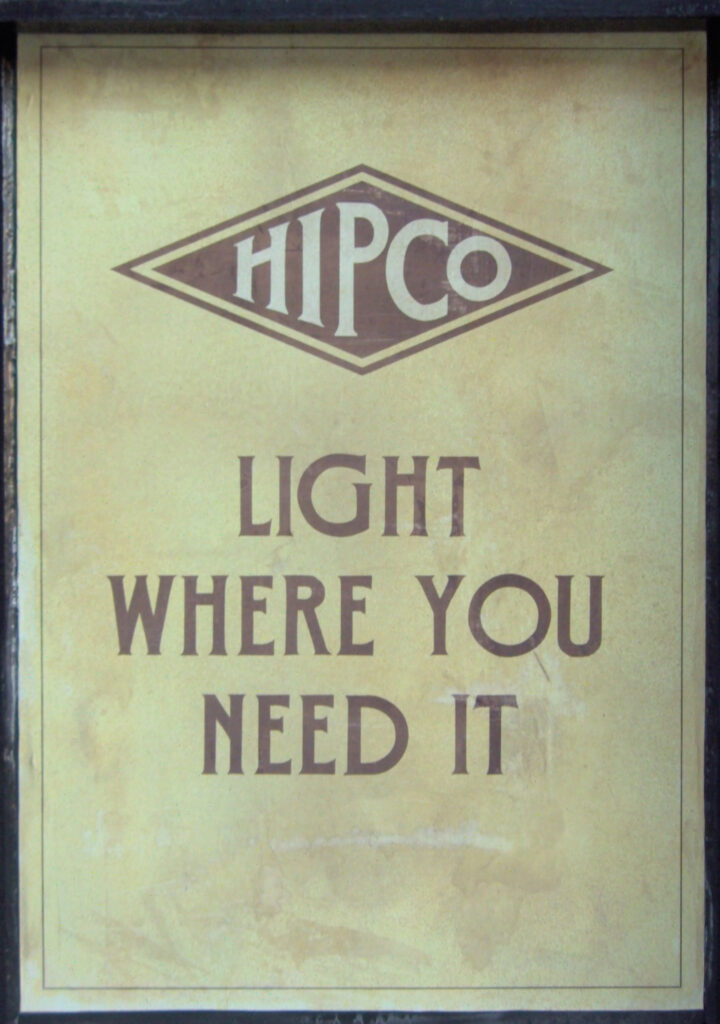
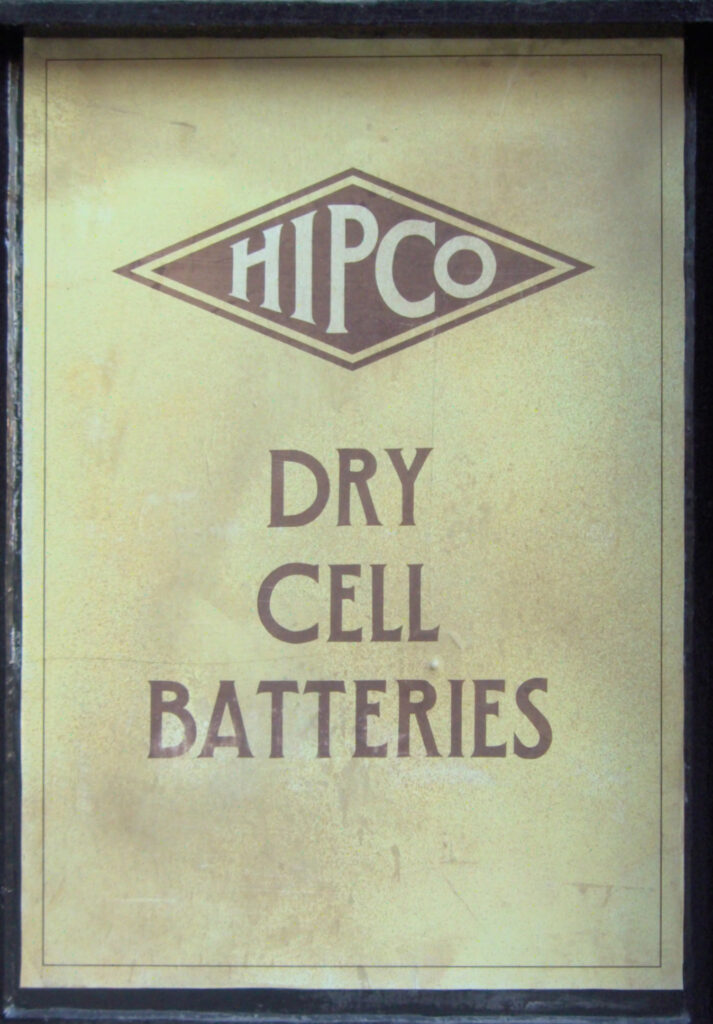


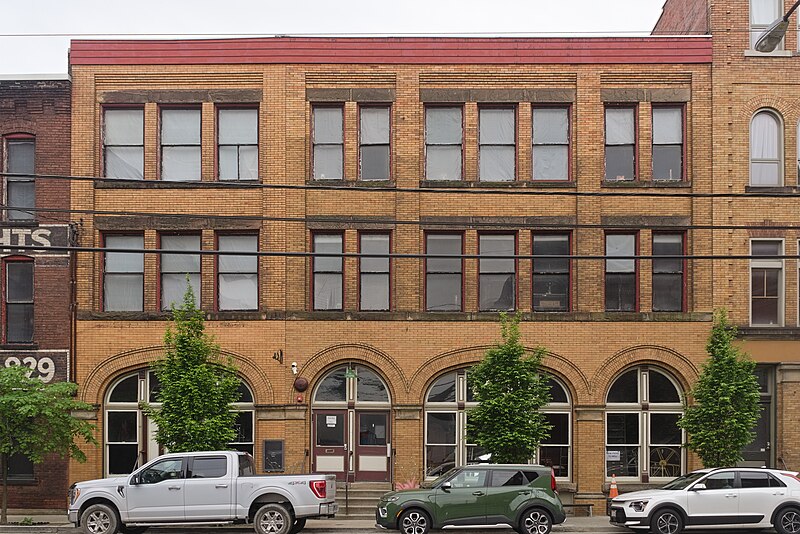
This buff-brick building also belonged to the Hipwell Manufacturing Co, and it was featured as the Hipwell factory in company advertising—but in a form we can only call fictionalized.
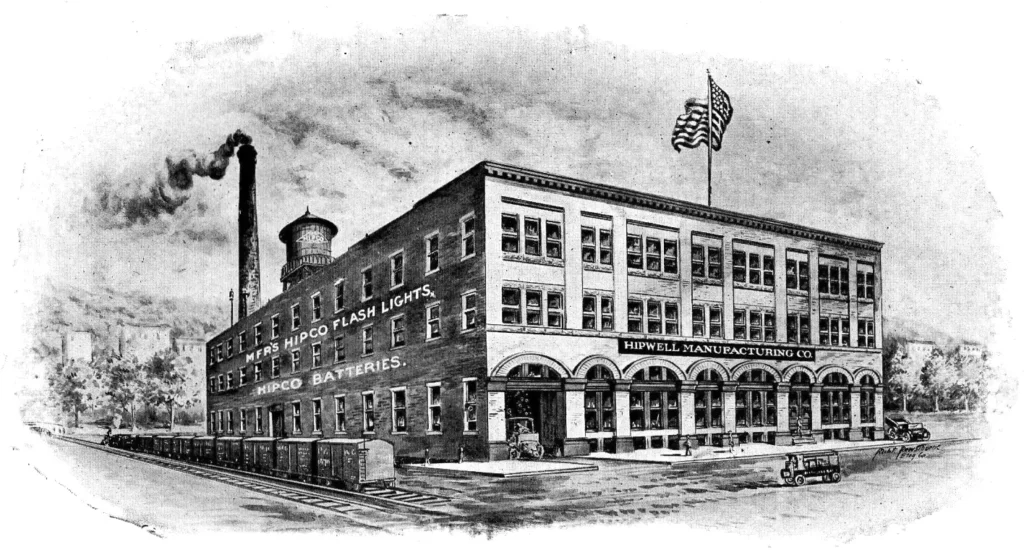
The distinctive alternating round and flattened arches are there, but there are twice as many of them. The building was never this size, nor was there ever a railroad siding where boxcars were stuffed with Hipco flashlights and batteries.

The old Hipwell factory kept turning out flashlights until 2005, which accounts for its fortunate state of preservation. It is now an event venue called Hip at the Flashlight Factory.
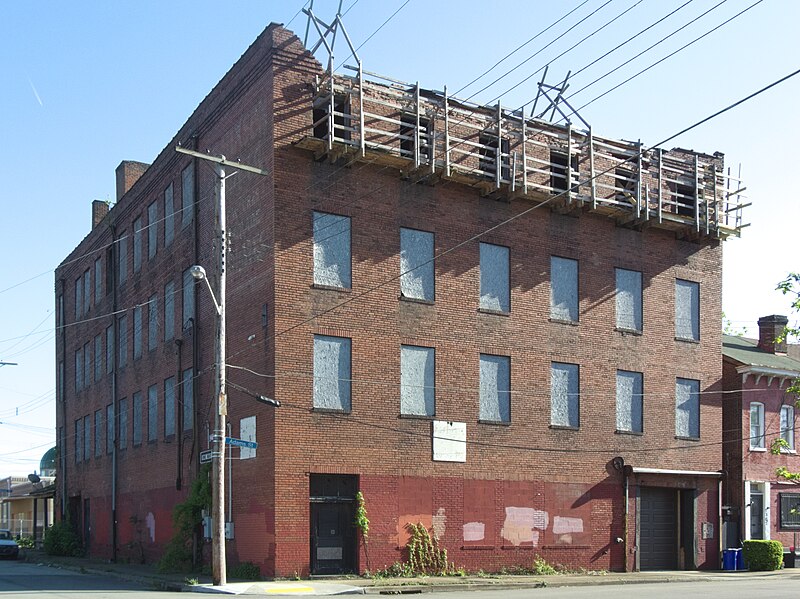
Old Pa Pitt knew absolutely nothing earlier this morning about the C. S. Hixson Candy Company, but neither does the rest of the Internet. This article, therefore, immediately becomes the Internet’s leading and only source of information on the subject.
The building was put up in 1917, to judge by listings in the American Contractor. Excavations had begun by April 28:
Factory: $25,000. 4 sty. 59×96. Adams & Fulton sts, Priv. plans. Owner C. S. Hixson Candy Co., 1024 Vickroy st. Gen. Contr. C. E. Murphy & Sons, 516 Federal st. Carp. & conc. work by gen, contr. Brk. mas, to C. B. Lovatt, 1203 Federal st. Plmg, to Walter Gangloff, 2471 Perrysvilie av. Excav.
Brick work had started by June 9.
The company, however, did not prosper long. Its charter as a Delaware corporation was repealed in 1921 for failure to pay taxes. In 1926, The International Confectioner reported that “There will be a meeting of the stockholders of the C. S. Hixson Candy Co., Pittsburgh, Pa., Jan. 17, to consider the question of selling or leasing the business, or to liquidate it and close up.”
And there you have everything Father Pitt was able to find out in twenty minutes, which is twenty minutes more than anyone else on the Internet has ever devoted to the subject.
This old industrial building is tumbling to bits, and if the neighborhood were more valuable it would have been gone years ago. It is not a work of outstanding architecture; the construction listings specified “private plans,” which probably means “We can do without an architect.” The borders of the Manchester Historic District were carefully drawn to exclude it while including the modest Italianate houses next to it. The work going on at the top may be part of a demolition; at any rate, the cornice was intact a few years ago. But it is an interesting little bit of history, and it preserves a record of its original owner on the eastern face of the building.

The old painted sign is still visible, and nearly legible with the help of some heavy manipulation. This is what it appears to say:
C. S. HIXSON
CANDY CO.
MANUFACTURES [sic] OF
HIGH GRADE
CHOCOLATES


The Pressed Steel Car Company had a huge plant in Stowe Township, just across the line from the McKees Rocks Bottoms. That company had a very cozy deal with the Carnegie Steel Company: Carnegie would not make railroad cars, and Pressed Steel Car would buy all its steel from Carnegie. Right next to the car works was the Carnegie Steel Company’s Schoen Rolled Steel Wheel Works, devoted to making wheels and axles. This elegant little building was the gatehouse and office for that plant.
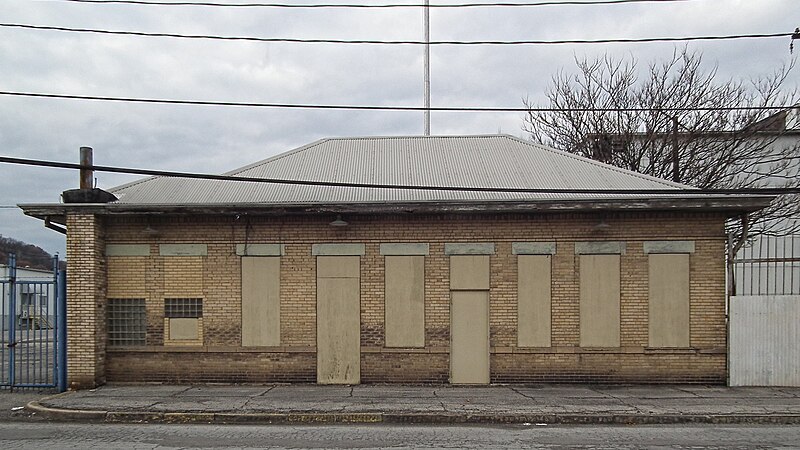
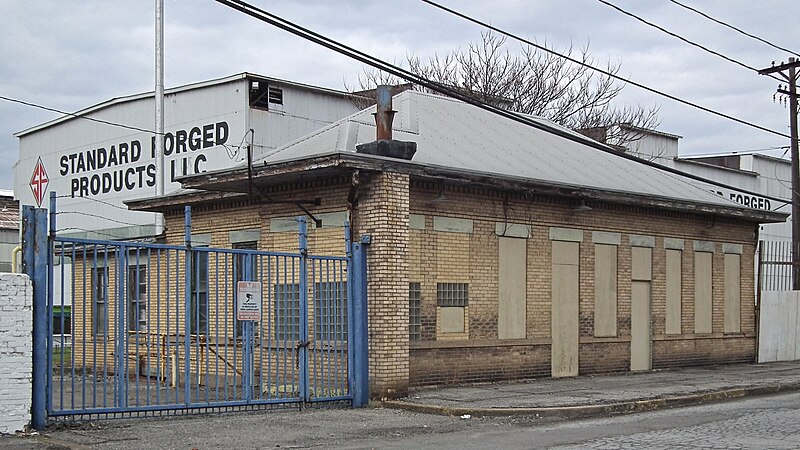
That plant is still in the same business, now under the name Standard Forged Products, still supplying railroad-car makers with “freight car, passenger car, subway or locomotive axles.”

These buildings were put up in the 1880s, with additions in the 1890s; they later became part of the United States Glass Co. More recently the South Side was associated with steel, but in 1872, when the Birminghams, South Pittsburgh, and Ormsby were taken into the city, glass was at least as important. Just looking at the 1872 map, we find—
Knox Kim & Co. Glass Works
Est. of Wm. McCully Glass Works
Pittsburgh Glass Works
Bakewell, Pears & Co. Glass Works
Whitehouse Flint Glass Works
Doyle & Co. Glass Works
Adams & Co. Glass Works
Tremont Glass Works
C. Ihmsen & Sons Glass Works
McKee & Bro. Glass Works
Bryce, Walker & Co. Glass Works
Sl. McKee & Co. Glass Works
A. King Glass Works
We have probably missed a few, but the list is quite enough to show us that glass was a big deal on the South Side. Of all the old glass factories, this is probably the only one left in such a splendidly original state, if any of the others remain at all.
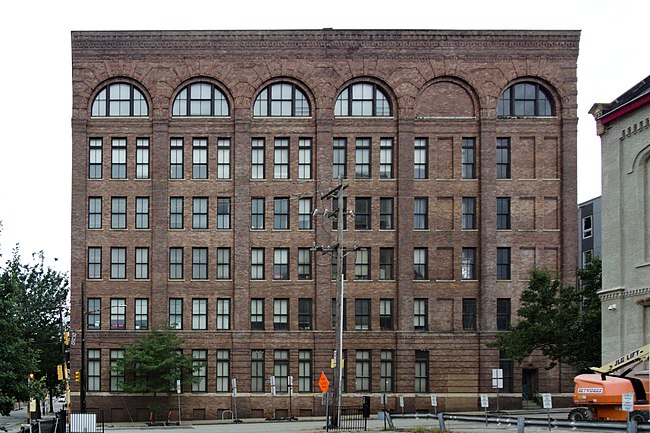
Charles Bickel designed this Romanesque industrial building with considerable inspiration from H. H. Richardson’s Marshall Field’s Wholesale Store in Chicago, which set the pattern for Romanesque industrial buildings for a generation. Bickel’s design is simpler, and by placing the arches at the top he makes the building feel taller (in fact it is shorter by one storey than Richardson’s building was).

The Reymer Brothers were in the candy business, but Pittsburghers remember them best for Reymers’ Blennd, or Lemon Blennd, the deliberately misspelled lemon-and-orange-flavored drink that cooled off generations of children in the summer. The Reymers’ Blennd brand was picked up by Heinz at some point; It seems to have vanished just this year with the demise of its last owner, Byrnes & Kiefer. It is certainly fondly remembered. Here is what claims to be the World’s #1 Lemon Blennd Site, and there are others if you go looking.